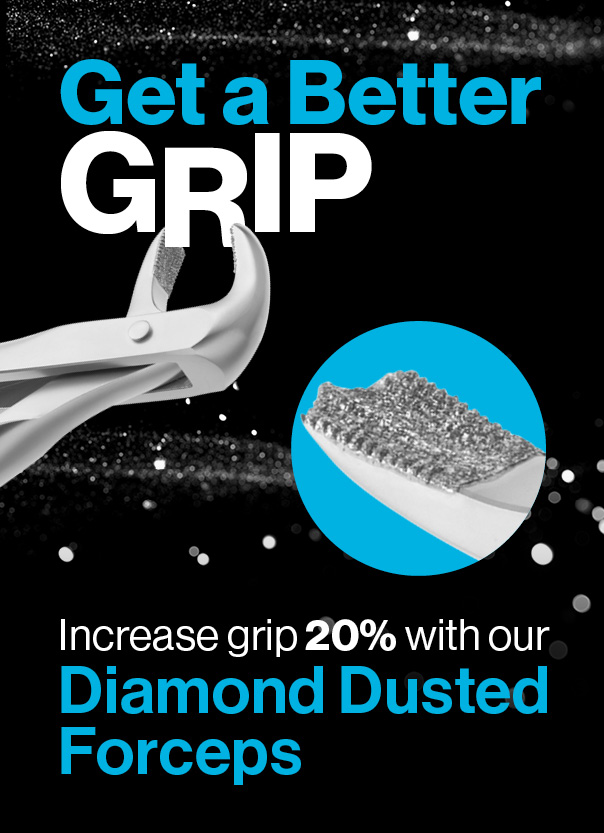Ultrasonic Insights - Seventeenth Edition
Extend the Life of Your Ultrasonic Inserts
Your practice has invested in providing power scaling for the best possible patient care. And, while ultrasonic inserts work hard to remove heavy calculus and stain, they can also be delicate --needing care and attention to perform optimally. Following the usage tips below can help you to protect and extend the life of your ultrasonic inserts.

Applying Too Much Pressure
Light pressure is all you need to allow the tip of the insert to efficiently vibrate – resulting in fracture or removal of deposits. Applying more pressure dampens the tip vibration leading to poor deposit removal, operator hand fatigue and patient discomfort. Ultrasonic inserts are designed to work with a light grasp and light lateral pressure – let the insert do the work for you!
Incorrect Power Settings
Each insert type is designed to be used within a pre-determined power range. Robust inserts, such as the Hu-Friedy #10, #1000 and Beavertail can be used from low to high power. Thinner inserts are designed for effective deposit removal using low to medium power only. Power ranges are specified on the insert packaging….stay within the range for optimal effectiveness.
Improper Sterilization and Maintenance
Sterilizing inserts in a cassette will protect them and extend their useful life. If your office uses sterilization pouches instead, always use caution when placing the insert in the ultrasonic bath or autoclave as heavier instruments placed on top can cause bending/breakage of the tip and/or stack. Cassettes provide the best long-term protection for your ultrasonic inserts.
Insert Type Matching the Clinical Application
Insert tips are designed for specific applications since complex oral anatomy and debris type/location prohibit an effective “universal” insert.
- Robust inserts, such as the #10, #1000 and Beavertail, are for moderate to heavy/tenacious deposits and stain in supragingival and accessible subgingival areas.
- Thin inserts allow enhanced access to narrow subgingival areas, tight pockets, interproximal concavities and other areas of difficult access.
Using thin inserts as “universal” inserts—particularly on moderate/heavy supragingival deposits—can result in excessive tip wear, inefficient deposit removal and tip bending/breakage. Match the correct insert to each clinical application. More than one type of insert may be needed for each clinical procedure.
Bending/Reshaping Insert Tips
Bending or reshaping insert tips is not recommended. Aside from voiding the warranty, reshaping the tip can result in poor tip performance and make the tip susceptible to breakage. Insert tips are designed with precise bends to optimize the elliptical vibration path—bending the tips disrupts this vibration pattern, rendering the tip inefficient at debris removal. Remove bent tips from procedural set-ups—use Hu-Friedy’s Insert Trade-In program where you can receive 1 free insert when you purchase 2 and trade-in 3!
Worn Insert Tips
Just like hand scalers, ultrasonic insert tips wear with use. Tip wear of 1mm results in 25% efficiency loss; 2mm of wear results in 50% efficiency loss. When using a worn tip, generally more pressure is applied or generator power is increased to compensate for the efficiency loss—often leading to patient discomfort and increasing the possibility of tip bending/breakage. Measure tip wear on a weekly basis and replace inserts as they wear and lose efficiency.
The Better Way
Hu-Friedy Ultrasonic Inserts Visit WWW.HU-FRIEDY.COM/INSERTS for more information on our complete line of ultrasonic inserts, adaptation videos and usage tips. Call our Customer Care team at 1-800-Hu-Friedy to request the following:
- Ultrasonic Insert Reference Guide (HF-512) which will provide you with tip descriptions, recommended uses, power settings, and usage tips
- Insert Wear Guide (HF-466) for regular assessment of your ultrasonic inserts.

